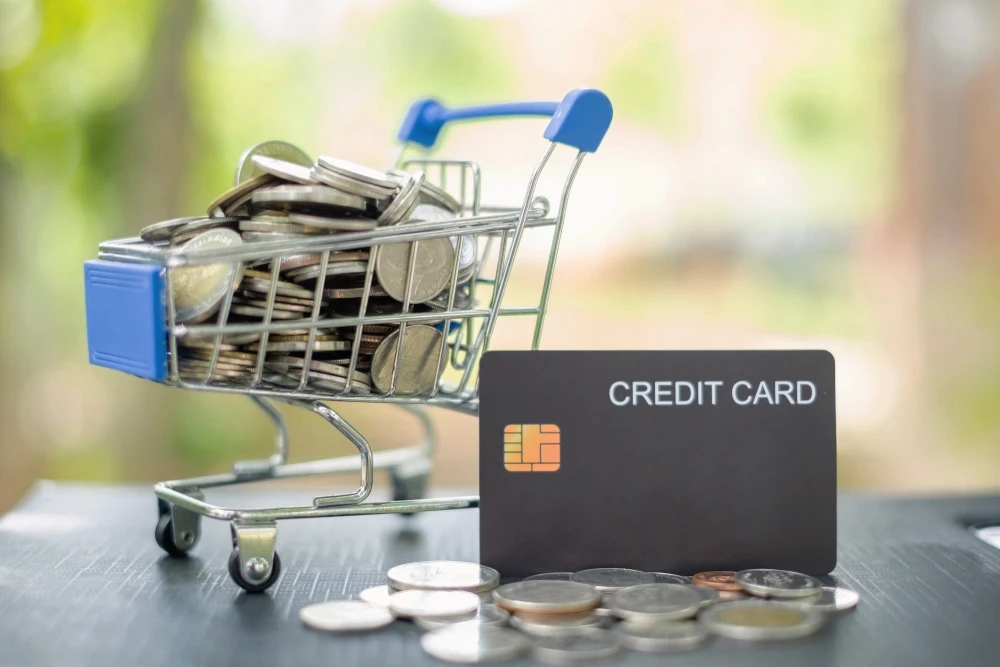Today, almost all of us use credit cards. Credit cards have eased making payments or doing any transactions. What is the main difference between a debit and a credit card? While using debit cards, you pay money from the funds you have deposited in your bank account. With credit cards, you buy first and pay later at the end of each month. So, you are borrowing money from the credit card issuer to purchase or make any transaction and then paying the total amount spent at the end of that period.
The outstanding credit card balance is the total amount that you owe the credit card issuer after making credit card transactions, such as paying restaurant bills, purchasing clothes or items online, paying utility bills, etc. This balance incurs interest, and the amount along with interest has to be paid to the credit card company periodically.
Knowing about outstanding credit card amounts, statement balances, monthly charges, etc., is an important part of enhancing your financial knowledge. You should be aware of all these things to read and understand your financial statements better.
What is an Outstanding Balance in a Credit Card?
If you often wonder what an outstanding credit card amount is, your search ends here. We will explain in detail what an outstanding balance is.
The outstanding credit card amount is also known as the current balance. The credit card outstanding amount is the total amount of money a cardholder owes to the credit card issuer at any given time.
- Adding all the money you spend on purchases, paying bills, online payments, etc.
- Adding all fees, like late payment fees, annual charges, etc.
- Deduct any payments or credits made to your credit card account.
For example, if you have purchased a total of Rs 40,000 in a month. And you have paid Rs 15,000 towards your credit card payment; your total outstanding balance would be Rs 40,000-Rs 15,000 = Rs 25,000/-
Any purchase you make or expense incurred would change the outstanding balance, so the outstanding balance is dynamic and changes with each transaction.
Difference Between the Outstanding Credit Card Balance and the Statement Balance
When you review your credit card statement, you might see two different balances: the outstanding balance and the statement balance. They are not the same thing.
The statement balance is the amount you owe on your credit card as per the last statement sent by the credit card issuer. It is either a monthly balance or a new balance and includes all transactions, such as fees, interest charges, etc., incurred during the previous billing cycle.
The outstanding balance, also called the current balance, is how much you owe to the credit card company at any given time. It includes all transactions, fees, etc., incurred since the last statement, plus any unpaid statement balance.
So, if you have not used your credit card since the last statement, your statement balance and outstanding balance will be the same. Otherwise, they will be different depending on your credit card usage and payments.
This difference matters as the amount of interest you pay and the credit available to you depend on it. To avoid paying interest rates, you should pay the entire amount due on the statement balance. However, if you pay only the outstanding balance due, you will incur interest on the balance amount due (statement balance due minus the outstanding balance amount paid).
Aim to have as minimum outstanding balance as possible for a good credit score. A higher outstanding balance means a lower borrowing limit and, therefore, a lower credit score. Overall, understanding the difference between outstanding balance and statement balance can help you maintain a good credit score, pay lower interest rates, and improve your financial well-being.
Interest on the Outstanding Credit Card Balance
Whenever you borrow money from the credit card company to make payments for purchases, bills, etc., you must pay interest on the amount borrowed to the credit card issuing company. So it is always a good idea to keep your outstanding amount on your credit card as low as possible to avoid paying high interest charges. The interest amount will depend on the
- Interest rate (annual interest rate)
- Your daily average balance (the total amount outstanding at the end of each day divided by the number of days of the billing cycle)
Let us understand it with an example:
- Suppose the interest rate charged by your credit card company is 15%
- The amount outstanding for the billing cycle is Rs 25,000
- So the amount of interest for a month will be 25000*30/365*15/100 = Rs 308.2
The Link Between the Outstanding Amount on a Credit Card and Credit Score
Your credit score speaks a lot about your financial well-being, your ability to repay your debts, and how regularly you repay your credit card dues. Financial institutions, banks, and companies issuing credit cards use this information when you apply for a new credit card or for any other loans to decide whether to approve the loan and also what interest rate to charge you.
If you make regular repayments to the outstanding amount on your credit card, your credit score will be higher. One of the main factors affecting your credit score is your credit utilisation rate. It is calculated by dividing the outstanding amount by your borrowing limit and multiplying it by 100. This will give you the percentage of your available credit being used at any given time.
- If your borrowing limit is Rs 1,00,000 and your outstanding amount is Rs 80,0000.
- So your credit utilisation ratio would be (80000/100000)*100 = 80%
This means you are using 80% of your available borrowing limit; it is a high ratio, meaning you are relying too much on the credit card for your payments and might be having trouble repaying it. Since this will be risky for the credit card issuing company if you do not repay the amount borrowed, a higher credit utilisation rate will reduce your credit score.
It is best to keep your credit score low, ideally less than 30%. By doing so, you send a positive message to the credit card company that you can repay the amount and are responsible for managing your finances.
Should you Pay the Outstanding Balance?
It is best to pay the full outstanding amount each month to avoid interest charges and maintain a good credit score. Whenever you are unable to pay the full amount, try to pay the minimum due to avoid late fees or adverse credit reporting.
Frequently Asked Questions
-
How Can I Check My Credit Card Outstanding Amount and Available Borrowing Limit?
All credit card issuers now have online banking and mobile banking services and apps where you can easily check your outstanding balance and the borrowing limit available. With the help of banking apps and websites, you get real-time updates to stay on top of your finances.
-
What Is the Total Amount Due, and How Is It Calculated?
It is the minimum amount you must pay by the end of your billing cycle to maintain a good credit score. It is calculated by adding the interest and fees to your outstanding balance.
-
What Happens if I Do Not Pay Any Amount Due Before the Due Date?
Whenever you do not pay the amount due before the due date, you incur late fees, your interest rate might increase, and your credit score will fall.
-
How Can I Check the Available Credit and Cash Limit of My Card?
All information related to your bank and credit card account is available online on the banking dashboard and in your monthly statements. You should check your credit and cash limits from time to time to better manage your spending and finance












